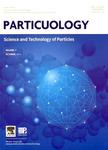Numerical study on the filtration characteristics of fine particles in granular bed filter at high temperature
作者机构:Nanjing Normal Univ Sch Energy & Mech Engn Nanjing 210023 Peoples R China
出 版 物:《PARTICUOLOGY》 (颗粒学报(英文版))
年 卷 期:2024年第93卷第10期
页 面:41-53页
核心收录:
学科分类:07[理学] 0817[工学-化学工程与技术] 070203[理学-原子与分子物理] 0805[工学-材料科学与工程(可授工学、理学学位)] 0702[理学-物理学]
基 金:National Natural Science Foundation of China
主 题:Granular bed filter Fine particles High temperature Filtration efficiency HOT GAS CLEANUP POROUS-MEDIA PACKED-BED MODEL SIMULATION PARAMETER FLOW ASH OPTIMIZATION TECHNOLOGY
摘 要:Granular bed filter (GBF) has become one of the current research hot topics due to its excellent performance in removing fine particles. In this paper, a three-dimensional fixed bed GBF filtration model was established and its accuracy was verified. Then, the GBF filtration performance at high temperature were studied. The results demonstrate that elevating the temperature diminishes the filtration efficiency, albeit to a limited extent. The increasing of inlet gas velocity can significantly improve pressure drop for GBF and the filtration efficiency for fine particles of sizes larger than 5 mm. As the diameter of stacked granular particle diameter grows, the filtration efficiency and pressure drop drops. The density of fine particles almost does not affect the filtration efficiency for fine particles of 1 similar to 7 mu m, but a higher density leads to a higher filtration efficiency for fine particles of sizes bigger than 9 mm. Additionally, as the fine particles size increases, the change of the filtration efficiency roughly goes through three stages: Stage 1: the filtration efficiency is basically unchanged; Stage 2: the filtration efficiency increases rapidly; Stage 3: the filtration efficiency increases steadily, but the rate of increase slows down. With the increase of the fine particles Stokes number, the filtration efficiency of GBF will pass through two phases of stabilization and rapid increase. (c) 2024 Chinese Society of Particuology and Institute of Process Engineering, Chinese Academy of Sciences. Published by Elsevier B.V. All rights are reserved, including those for text and data mining, AI training, and similar technologies.



